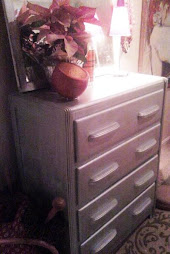this blog is dedicated to helping people create their ideal homes in the least expensive and quickest way. therefore, i have below created a worksheet for our projects. this sheet give you direction and concrete solutions to the decorating questions of each project.
feel free to steal/"borrow" it from me!DESIGN WORK SHEET OUTLINE
TIMELINE
Ideal start date:_____________________PRACTICAL NEEDS AND DETAILS
Ideal completion date:________________
WHAT IS THE ULTIMATE GOAL FOR THIS PROJECT: _________________________________________________________
WISH LIST:
_________________________________________________________
ENTERTAINING
business large groups
social informal
small groups casual
number of chairs NEEDED:________
DAILY USE
daytime
nighttime
equally
What is your biggest concern at start? _____________________________________________________ _____________________________________________________ ______________________________________________________
What pieces will stay in the room? ___________________________________ ___________________________________ ___________________________________
What needs to be added to this room? ____________________________________ ____________________________________ ____________________________________
CEILING normal_________ high_________ pitched________ DETAILS Natural light? ________________________Focal point?__________________________
STYLE PREFERENCES
List three adjectives that describe the feel of your dream room. ___________________________________ ___________________________________ ___________________________________
STYLE What style/s best appeals to you: cozy traditionallived-in contemporary romantic west indies formal eclectic country casual elegance elegant seaside cottage transitional aspen lodge casual urban loft country french english old world european
COLOR SCHEME What color combinations appeal to you?
whites naturals/neutrals grays and blacks earth tones pastels warm colors jewel tones nncool colors
What amount of color appeals to you?
loads of color subtle color color mostly in accentscolor limited to walls and floors
What feel appeals to you? rooms that appear spacious and open rooms cozy, intimate & comfortable
What colors and wood tones appeal to you?
___________________________________
___________________________________
___________________________________
stripes mini-patterns plaids geometrics florals leather abstracts tapestries large patterns small patterns bold, bright patterns subtle patterns with texture WINDOW TREATMENTSDo you have existing window treatments?
If so, what are they?
top treatments vertical blinds full draperies shutters side panels wood blinds woven blinds outside view /colors__________________________________
fabric shades importance
(1-10) ______
DECISION MAKERS ____________________________________ ___________________________________ BUDGET PLAN up to $5,000 $5,000 to $10,000 $10,000 to $15,000 $15,000 to $20,000 $20,000 to $30,000____________________________________
If completing in multiple phases, how much for phase 1, 2... ____________________________________________________________________________
Floor type? ____________________________________
Adjoining room details? ___________________________ FABRICS THAT APPEAL (include item numbers) ________________________________________________________________________________________________________________________
________________________________________
PAINTLIST PAINT COLORS WITH ITEM NUMBERS______________________________________________
______________________________________________
_______________________________________________
___________________________________________________


